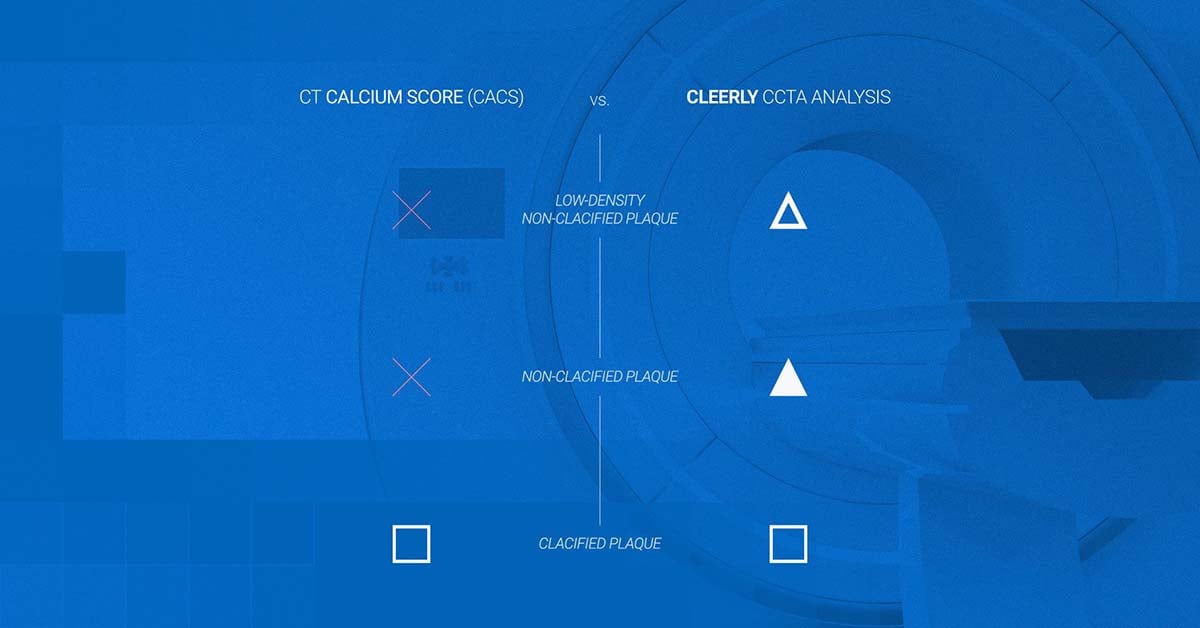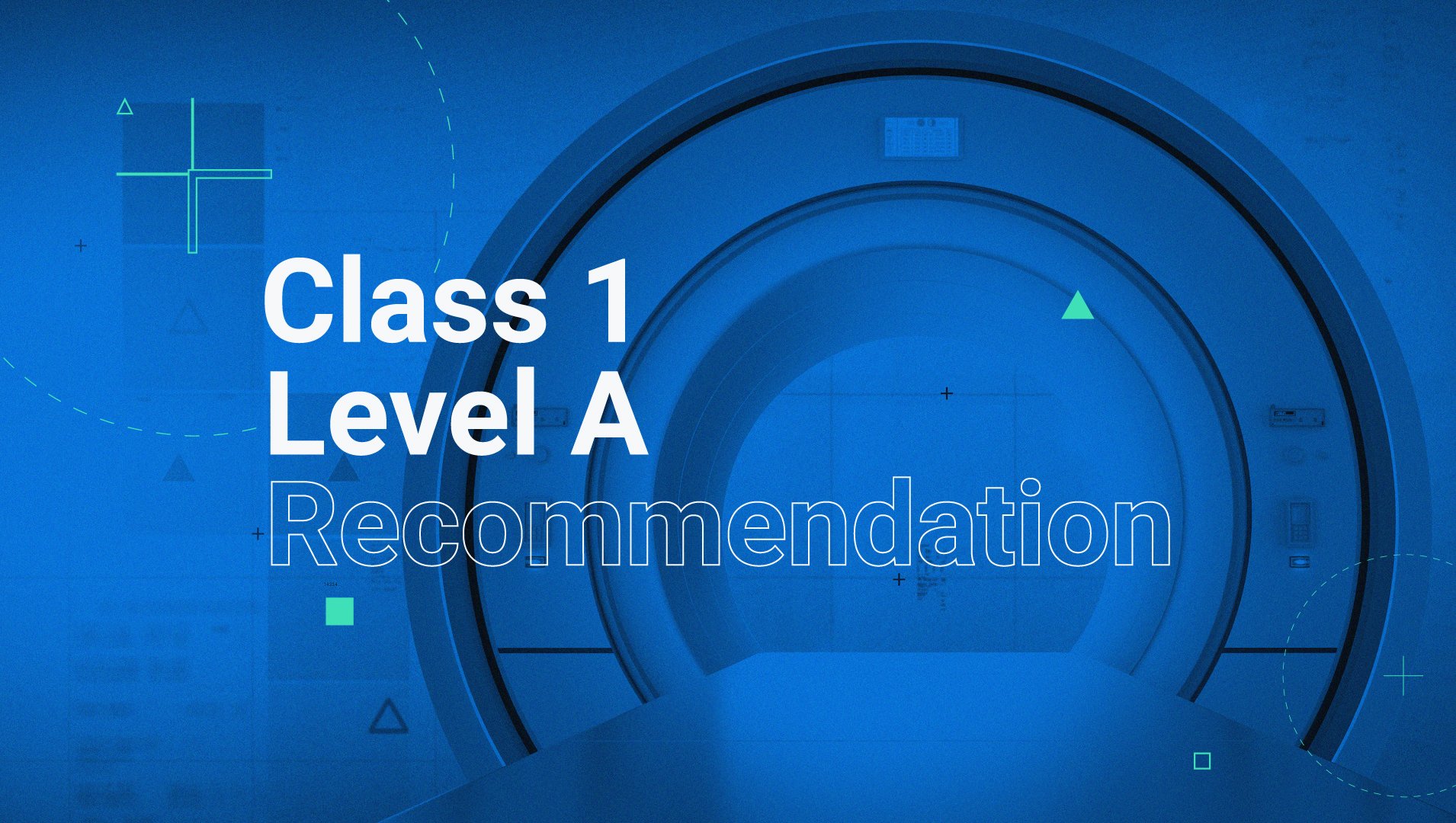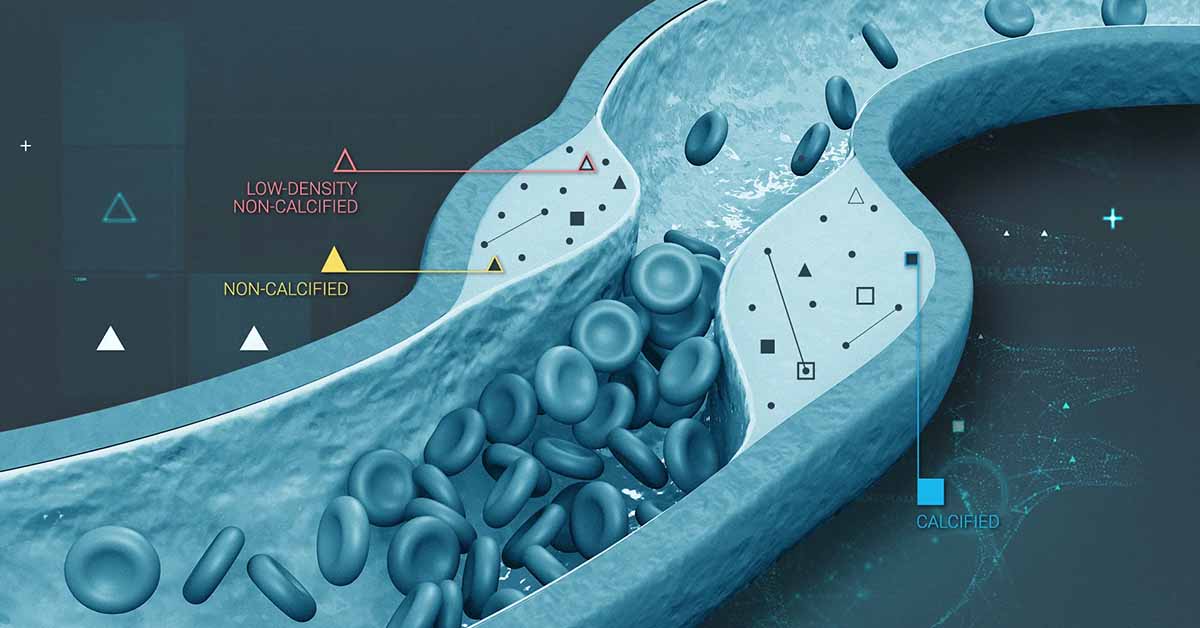The Recipe to a Healthy Heart:Your Guide to Preventing Heart Disease
Sure, the taste of food is important, but do you know how your diet impacts your heart? Many foods contain hidden ingredients that negatively impact...
4 min read
 Cleerly
:
June 6, 2023
Cleerly
:
June 6, 2023

Both coronary artery calcium score (CACS) and Cleerly evaluate heart disease risk using cardiac imaging. Learn about the key differences between the two technologies.
A coronary artery calcium score (CACS) is a test used to assess a person’s risk of future heart attack or stroke. The test uses computed tomography (CT scan) to detect calcium in the heart’s arteries, which can indicate the presence of plaque. Plaque is made of multiple substances, including calcium, and the buildup of plaque in the arteries can increase the likelihood of having a heart attack or stroke.
The scan gives a number, typically an Agatston score, which indicates the amount of calcium present. These scores range from 0 to above 1000. Higher scores indicate more significant evidence of plaque inside the heart arteries. Doctors can compare a patient’s score against others’ scores of the same gender, ethnicity and age. This can help doctors determine if a person’s CACS is higher than average and puts that person at higher risk of coronary artery disease.1
The CACS method was first developed by Dr. Arthur Agatston and researchers associated with Mount Sinai Medical Center, who published their findings in the Journal of the American College of Cardiology in 1990 ⇱. In the study, researchers used a CT scan, a type of X-ray, to examine twenty 3 mm scans of each of the participants’ coronary arteries. Researchers used the scans to identify calcific lesions and measure the amount of calcium in these lesions. They used the results to create a model of coronary artery disease risk based on the amount of calcium in a person’s scans.
Since 1990, the CACS test has been accepted by many as a valuable tool for understanding coronary artery disease and heart attack risk. Preventative medicine providers may recommend the test for individuals with moderate or unknown heart disease risk.
Calcified coronary plaques occur more frequently in older individuals and those with atherosclerosis elsewhere in the body. However, a CACS does not provide a full picture of a person’s actual state of coronary artery disease. A CACS score of zero means there is no calcified plaque, however, other types of non-calcified plaque may still be present. These other kinds of plaque can still put a person at risk of heart attack.
On its own, and even in conjunction with other markers of heart health such as blood pressure or cholesterol, a CACS cannot fully show what’s happening inside the heart because it only measures one type of plaque and does not measure any narrowings (called stenoses) within the heart’s arteries. However, another CT based study, CCTA, can more comprehensively evaluate different types of plaque as well as the presence and degree of stenoses. This has been validated by multiple studies and CCTA is now considered as a gold standard for coronary artery disease assessment.
In 2021, the American College of Cardiology (ACC) and American Heart Association (AHA) identified CCTA as a Class 1, Level A method for testing for coronary artery disease ⇱. Class 1 is the strongest recommendation available for a medical test. Level A indicates there is clear evidence from more than one randomized clinical trial that CCTA is beneficial and effective.
In short, the evidence shows that CCTA is a valuable tool for noninvasive coronary artery disease evaluation. But, once a scan is complete, it must still be interpreted by a clinical reader so its results can be used to guide clinical decision making. CCTAs can be difficult for clinical readers to interpret accurately, as they can sometimes overestimate the degree of stenosis (if present) and they also have difficulty determining the overall quantity of plaque as well as its breakdown into the different types of plaque.2 This leaves a need for a reliable, consistent way to read CCTA results.
Cleerly builds on the work of past clinical trials to make CCTA analysis more precise, easily understood and personalized. Cleerly’s AI algorithms generate a 3D model of the coronary arteries, locate heart blockages, as well as identify, quantify and categorize plaque.
Providers and patients can see precisely where this plaque is located and what the plaque composition is via an image-based breakdown. This allows for personalized and targeted treatment planning and follow up.
Once a patient has been diagnosed and placed on therapy, a patient can get a follow-up Cleerly analysis to compare their results over time and as a result, monitor the effectiveness of treatment. This is important because certain types of plaque, high-risk non-calcified plaque, are known to put a person at higher risk for heart attack.3 The goal of coronary artery disease treatment with Cleerly is to reduce the amount of high-risk plaque and transform it into low-risk, calcified plaque. CACS is not able to show this level of detail - only the presence of calcium - and in fact, cannot show the difference between high-risk and low-risk plaque.
Compared with CACS, Cleerly is a much newer method of coronary artery disease evaluation. We are building our availability across the U.S. in both private practices, imaging centers, and larger health systems.
Patients interested in learning about how to get our test are invited to use our Cleerly locator tool. Clinicians who want to learn how our technology is different from a calcium score can contact us to speak with our medical team.
References:
1. Heart Scan (Coronary Calcium Scan) ⇱. Mayo Clinic. Accessed March 31, 2023.
2. Jonas, R. A., et al. Interobserver variability among expert readers quantifying plaque volume and plaque characteristics on coronary CT angiography: a CLARIFY trial sub-study. Clinical imaging. https://doi.org/10.1016/j.clinimag.2022.08.005 ⇱
3. Williams, M.C., et al. Low-Attenuation Noncalcified Plaque on Coronary Computed Tomography Angiography Predicts Myocardial Infarction. Circulation. https://doi.org/10.1161/CIRCULATIONAHA.119.044720 ⇱

Sure, the taste of food is important, but do you know how your diet impacts your heart? Many foods contain hidden ingredients that negatively impact...

As we reach the end of 2023 and yet another remarkable year at Cleerly, it’s a great opportunity to reflect on all we’ve accomplished and begin...

Cleerly has had a busy few months – attending conferences, panel sessions, and winning awards as we all work together to achieve our mission of a...

When patients present to physicians with an elevated risk of coronary artery disease, or CAD, cardiologists have many tests at their disposal....

Heart plaques, which are the build-up of substances like cholesterol and fat in the heart’s arteries, can increase your risk of heart attack. A...

"It's very scary because I had a lot of patients and even friends and neighbors that had heart attacks, and we thought they were healthy by eating...